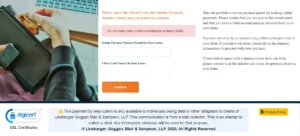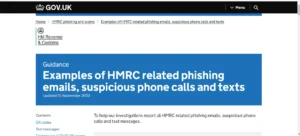In recent years, scam artists have increasingly utilized technology to dupe unsuspecting individuals. One prevalent scheme involves the use of fake text messages impersonating reputable companies like FedEx. These fraudulent texts, seemingly sent by the courier service, aim to deceive recipients into providing personal information or clicking malicious links.
This type of scam, known as the FedEx Tracking Scam, can have serious consequences for those who fall victim to it. In this article, we will explore how the scam operates, identify warning signs of a fake FedEx text message, and provide steps to protect oneself from such scams.
By staying informed and vigilant, we can effectively combat these fraudulent activities and safeguard our personal information.
How the FedEx Tracking Scam Works
The FedEx Tracking Scam works by exploiting unsuspecting individuals through the use of fraudulent text messages. These messages often contain warning signs of a fake text message, such as misspellings, grammatical errors, or requests for personal information.
To avoid falling for the scam, it is essential to be vigilant and verify the authenticity of any messages claiming to be from FedEx. Take steps like contacting FedEx directly to confirm any tracking information and never click on suspicious links or provide personal information in response to such messages.
Warning Signs of a Fake FedEx Text Message
To identify a fake FedEx text message, it is important to be aware of certain warning signs. Here are four key indicators to help you in scam prevention and identifying phishing attempts:
- Suspicious Sender: Pay attention to the phone number or email address of the sender. If it appears unrelated to FedEx or contains misspellings or odd characters, it is likely a fake message.
- Urgency and Threats: Scammers often create a sense of urgency by claiming your package is in danger or that you will face consequences if you don't take immediate action. FedEx does not typically use such tactics.
- Request for Personal Information: Be cautious if the message asks for personal details like credit card numbers or passwords. FedEx will never ask for this information via text message.
- Poor Grammar and Spelling: Fake messages often contain glaring grammatical errors and misspellings. Legitimate communications from FedEx maintain a high level of professionalism and accuracy.
Examples of Phishing Texts Impersonating FedEx
Phishing texts impersonating FedEx are becoming increasingly prevalent. It is important to be aware of the common techniques used by scammers. These texts often contain red flags that can help identify them as fraudulent. Some of these red flags include grammatical errors, suspicious links, or requests for personal information.
To protect yourself online, it is crucial to stay vigilant. Always verify the authenticity of any messages before taking any action. Implement strong security measures on your devices to further safeguard your personal information.
Common Phishing Techniques
Impersonating a reputable courier company, scammers employ various phishing techniques, such as sending fake text messages, to deceive individuals into revealing sensitive information. These techniques play on people's trust in well-known brands like FedEx, exploiting their credibility to trick unsuspecting victims.
The following are examples of common phishing techniques used in text messages impersonating FedEx:
- Urgent Delivery Update: Scammers create a sense of urgency by claiming there is an issue with the delivery and requesting personal information to resolve it.
- Prize or Reward Notification: Fraudsters lure victims with fake notifications of winning a prize or reward, asking for personal details to claim the supposed gift.
- Package Tracking Update: Phishers send fake tracking updates, enticing recipients to click on malicious links that can lead to the installation of malware or the theft of personal information.
- Payment Confirmation Request: Scammers send text messages requesting payment confirmation for a fake package, aiming to trick individuals into revealing their financial details.
To protect oneself from falling victim to these scams, it is important to be aware of such phishing techniques and take necessary online security measures, such as verifying messages from reputable sources and never sharing personal information via text messages.
Red Flags to Look for
Exploiting people's trust in reputable courier companies like FedEx, scammers employ various phishing techniques to deceive individuals into revealing sensitive information. This includes sending fake text messages. To protect yourself from falling victim to these scams, it is important to be aware of the red flags to look for.
Some common red flags include spelling and grammatical errors, requests for personal information, and suspicious links. It is crucial to never click on suspicious links. If you receive an unexpected message, verify its authenticity with the courier company directly. Educating yourself about phishing techniques can also help prevent you from becoming a victim.
Protecting Yourself Online
To safeguard your online security, it is imperative to remain vigilant against fraudulent text messages purporting to be from FedEx. These phishing texts aim to deceive unsuspecting individuals into sharing personal information or downloading malicious software.
To protect yourself and maintain your online privacy, follow these tips:
- Be cautious of unsolicited messages asking for personal information.
- Verify the sender's identity before clicking on any links or downloading attachments.
- Install reliable antivirus software to detect and prevent phishing attempts.
- Regularly update your devices and applications to ensure they have the latest security patches.
Common Tactics Used by Scammers
Scammers often employ various deceptive tactics to defraud individuals, with a popular approach being the use of fake text messages in the context of a Fedex tracking scam. These scammers send text messages claiming to be from Fedex, stating that a package is on its way and requesting personal information or payment for customs fees.
To avoid falling victim to such scams, individuals should exercise caution and verify the authenticity of any messages they receive, especially when it involves sensitive information or financial transactions. Implementing scam prevention measures and practicing online safety are crucial in protecting oneself from these fraudulent schemes.
Risks of Clicking Links or Providing Personal Information
Individuals face significant risks when clicking on links or providing personal information in response to fraudulent text messages claiming to be from Fedex. The consequences of falling for these scams can be devastating. Here are four reasons why sharing personal information with scammers is dangerous:
- Identity theft: Scammers can use your personal information to steal your identity and commit various fraudulent activities in your name.
- Financial loss: By obtaining your financial information, scammers can drain your bank accounts, make unauthorized purchases, and ruin your credit.
- Privacy invasion: Sharing personal information with scammers exposes you to invasion of privacy, as they may sell or use your data for malicious purposes.
- Cybersecurity threats: Clicking on links in these messages can lead to malware infections, giving scammers access to your devices and sensitive information.
It is crucial to be vigilant and cautious, always verifying the authenticity of messages before sharing any personal information.
Steps to Take if You've Fallen for the Scam
If you have unfortunately fallen for the FedEx tracking scam and provided personal information or clicked on suspicious links, there are several steps you should take to mitigate the potential damage.
Firstly, it is crucial to report the scam to the appropriate authorities, such as the Federal Trade Commission (FTC) and your local law enforcement agency.
Secondly, contact your bank or credit card company immediately to inform them of the situation and take necessary steps to protect your accounts.
Lastly, enhance your cybersecurity measures by updating your passwords, enabling two-factor authentication, and being cautious of suspicious emails or messages in the future.
Reporting the Scam
After falling victim to the FedEx Tracking scam, it is imperative to promptly report the fraudulent activity to the appropriate authorities. To ensure that the scam is properly addressed, follow these steps:
- Contact your local law enforcement agency and provide them with all relevant details of the scam.
- Report the incident to the Federal Trade Commission (FTC) through their online complaint assistant.
- Notify FedEx of the scam by forwarding the fraudulent text message to their dedicated email address for reporting scams.
- Share your experience on online platforms such as social media to raise awareness and prevent others from falling victim to the same scam.
Contacting Your Bank
To mitigate the financial impact of falling for the FedEx Tracking scam, it is crucial to promptly contact your bank and follow specific steps to minimize further damage.
Start by contacting customer service to report the fraudulent transaction and request a freeze on your account. Provide all necessary details and documents to support your claim.
Additionally, it is advisable to file a police report to document the incident and assist in any potential investigations.
Taking immediate action is essential to protect your financial well-being.
Enhancing Cybersecurity Measures
To improve cybersecurity measures after falling victim to the FedEx Tracking scam, individuals should promptly update their passwords and enable two-factor authentication for all online accounts.
Additionally, it is crucial to prioritize employee training in cybersecurity to ensure they are equipped with the necessary knowledge and skills to identify and prevent scams.
Technology also plays a pivotal role in enhancing cybersecurity measures, with advanced software and tools aiding in detecting and mitigating potential threats.
Tips to Protect Yourself From Future Scams
Implementing security measures is essential in safeguarding against future scams.
To protect yourself from online shopping scams, it is crucial to exercise caution when sharing personal information and purchasing from unfamiliar websites.
Be wary of suspicious emails and avoid clicking on links or downloading attachments from unknown sources.
Strengthen your email security measures by using strong, unique passwords, enabling two-factor authentication, and regularly updating your software.
Stay informed about current scams and educate yourself on how to identify and report fraudulent activities.
Reporting the Scam to FedEx and Authorities
You can report the FedEx tracking scam to both FedEx and the relevant authorities. Here are the steps to take when reporting the scam and seeking legal action:
- Contact FedEx: Reach out to FedEx directly through their official website or customer service hotline. Provide them with details of the scam, such as the fraudulent message and any other relevant information.
- File a complaint: Report the scam to the appropriate authorities, such as the Federal Trade Commission (FTC) in the United States or your local law enforcement agency. Provide them with all the information you have regarding the scam.
- Preserve evidence: Keep any evidence related to the scam, such as text messages, emails, or screenshots. This evidence may be crucial if legal action needs to be taken against the scammers.
- Seek legal advice: Consult with a legal professional to understand your rights and options. They can guide you on the necessary steps to take, including filing a lawsuit or seeking compensation for any losses incurred due to the scam.
Conclusion
In conclusion, the FedEx tracking scam is a deceptive tactic used by scammers to impersonate FedEx and trick individuals into clicking on malicious links or providing personal information.
By being aware of the warning signs and common tactics used by scammers, individuals can protect themselves from falling victim to this scam.
Reporting the scam to FedEx and relevant authorities is crucial in stopping these fraudulent activities.
By following these steps and implementing security measures, individuals can safeguard themselves from future scams.










































